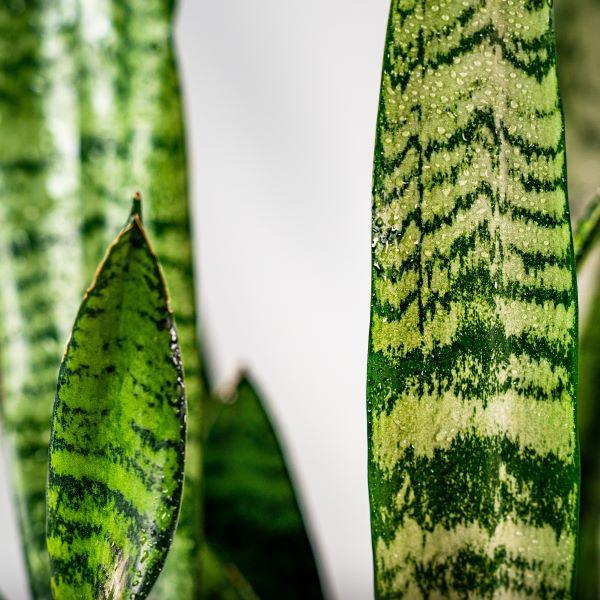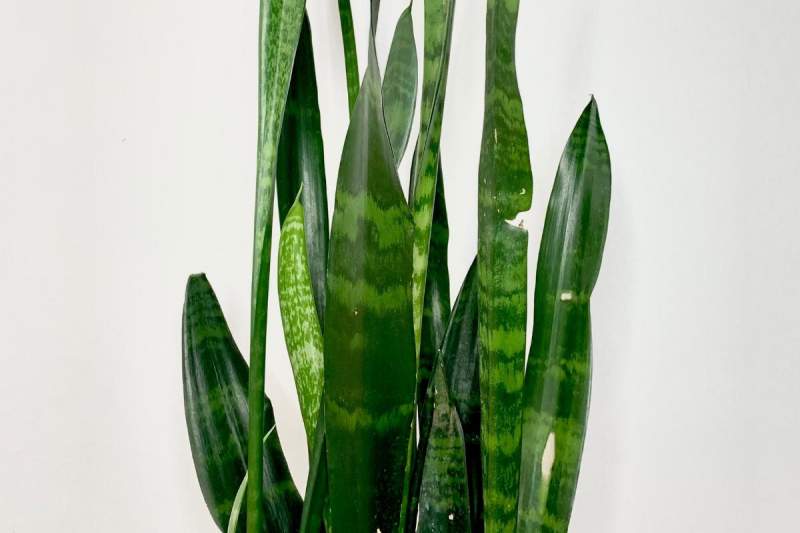The Single Strategy To Use For Snake Plant Leaves Turning Yellow
Wiki Article
Snake Plant Leaves Turning Yellow Can Be Fun For Anyone
Table of ContentsThe Definitive Guide for Snake Plant Leaves Turning YellowAll about Snake Plant Leaves Turning YellowSnake Plant Leaves Turning Yellow Fundamentals ExplainedFascination About Snake Plant Leaves Turning YellowNot known Factual Statements About Snake Plant Leaves Turning Yellow Snake Plant Leaves Turning Yellow for Dummies

Preferably, you need to include a liquid plant food to the plant's water. It is better to provide serpent plants as well little fertilizer instead of way too much. Do not fertilize serpent plants in the winter season. Repotting Flat pots with large diameters are perfect for Sansevieria, as the plants create thick roots that spread flat just under the surface of the dirt.
This is just needed when the plants are entirely rooted through, if the rhizomes push each other up out of the dirt or expand over the edge of the pot. Some fallen leaves might fall away over the sides on high houseplants as the root is not adequately secured in the soil.

Snake Plant Leaves Turning Yellow Fundamentals Explained
The celebrity sansivieria (Sansevieria kirkii) has great deals of tiny, thin fallen leaves. There are also a number of attractive sorts of this varieties. One especially pretty alternative of the easy-care house plant is the follower snake plant (Sansevieria zeylanica). Circulating serpent plants The green-leaved snake plant can be really quickly circulated in the springtime or summertime via cuttings about 1.You should note when propagating the serpent plant which reduced side belongs at the top and which at the bottom! Only then ought to the leafed items be grown in moist substrate.
Shorten the leaves of long-leafed selections by concerning half so that the plant is steady in the pot. Diseases and Pests The serpent plant is an extremely robust plant also with modest care and in sub-optimal conditions; it even forgives significant care mistakes.
Brownish tinted or limp fallen leaves are normally created by root rot, waterlogging or temperature levels that are too reduced. The most frequent pests on serpent plants are mealybugs.
3 Easy Facts About Snake Plant Leaves Turning Yellow Explained
Sansevieria, Mother-in-Law's Tongue, Viper's Bowstring Hemp. There are lots of various kinds of Snake plant which all need the same treatment: Serpent plant moonshine Serpent plant Victoria Serpent Plants can stay in low light to intense, direct sun (Snake Plant Leaves Turning Yellow). They're the perfect plant to bring life to a dark room or edgeThroughout the winter season do not hesitate to just sprinkle your serpent plant when a month if the soil is still damp after 2 weeks. Snake Plant kingdoms do not have any type of certain humidity needs yet they choose drier environments. Serpent Plant kingdoms do not have any type of certain temperature needs, yet will certainly suffer if subjected to temperature levels listed below 10C.
Its slow growth price makes it relatively uncommon in the trade. There are two nearly the same kinds, one of which is'Nelsonii'.'Nelsonii 'propagates real to kind from leaf cuttings while the other kind, additionally sold as'Nelsonii', need to be circulated by root department since fallen leave cuttings produce S. trifasciata.
Harvesting bed-grown sansevieria is a careful thinning procedure. Solitary rosettes of preferred dimension are cut from the continuing to be clump by hand with a weeding knife or similar cutting device, and lifted from the bed. Totally efficient beds are collected 5 to 6 times per year to avoid crowding of young plants which misshapes brand-new rosettes.
Snake Plant Leaves Turning Yellow Fundamentals Explained
Research has actually shown that S29 pound per extra pound. Nonvariegated plants are typically extra efficient than variegated cultivars of the very same types. Some baby rooms grow little plants from dig this fallen leave cuttings in either ground beds or raised benches.
5 inches into a well drained pipes yet moist tool. Since the top and basal end of cuttings drawn from the mid-section of taller types is hard to figure out visually, it is frequently preferable to mark or scratch one end of the cuttings regularly to aid in sticking. Cuttings stuck upside down will certainly not establish roots.
10 Easy Facts About Snake Plant Leaves Turning Yellow Shown
Root and shoot development occurs extra gradually at reduced temperature levels; temperatures listed below 60F should be prevented. Relying on cultivar, reducing size, section of fallen leave used, and its physical problems, leaf cuttings will normally generate 1 to 5 plantlets. Plantlets should be damaged or cut from the leaf cutting when they reach the preferred sized.
Ten to 12 plant food applications per year to stock beds under area conditions or under structures will maintain sufficient fertility, plant vigor, and high quality. Nitrogen is the most important element in the majority of nurseries in regards to limiting the price of plant growth. Supply beds must receive 500 to 750 extra pounds per acre each of nitrogen (N) and potash (K2O).
Serpent plants are a terrific enhancement to any home. you could check here If you've obtained one and you see that the leaves of your serpent plant are splitting, don't fret!
Signs and symptoms include plants that do not get adequate water or plants that are over-watered. Plants that don't obtain enough water will have dry fallen leaves and stems, with huge voids in between the split areas of their fallen leaves. Over-watered plants will certainly have soft and saggy stems, along with white areas on the underside of the leaf.
More About Snake Plant Leaves Turning Yellow
If your serpent plant's fallen leaves are breaking, it may be because of overwatering. When you sprinkle your serpent plant, you desire to stay clear of saturating the dirt so it remains wet yet not soggy. If you water as well often or excessive, after that the dirt can end up being as well article source damp and will certainly not soak up moisture as easily when watered again.Report this wiki page